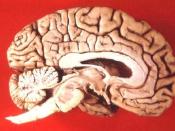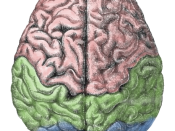It's important for educators to understand how the human brain works. The human brain is constantly learning, acquiring, and thirsting for knowledge. Why, then, do so many children "hate" school? Could it be that educators don't understand the brain?
When people learn, they are changing the structure and chemistry of their brains. To make connections, dendrites--threadlike fibers that extend from the neuron--reach out and grow together. If information can be processed in many different ways, the connections will be stronger. Teachers need to understand how the brain makes these connections in order to fully teach their students.
It's also been proven that attention is controlled by emotion. If students are embarrassed, sad, or angry, their attention will be somewhere besides the classroom. Teachers can make students pay attention by doing things like making a subject relevant, including mystery in their presentation, using public demonstration, challenging students, and making sure the learning environment is comfortable.
It is not easy to find the balance between just enough stress to motivate and too much stress, which will overload a student, but that is what teachers have to do.
The brain is always looking for patterns. People want to make sense out of nonsense; find constants in an every-changing world. It's best to try and hook new learning to something familiar. Providing new experiences is another way to get students to learn. Music and art, which are both full of patterns, are also ways to develop the brain.
Some actions can be learned as a set. Tying, language, and driving are some examples of that. Memorization and rote-learning can help set patterns in the mind. Learning the times tables, for instance, is something that a student will just have to memorize. However, once you put a pattern in place, it's hard to break...


